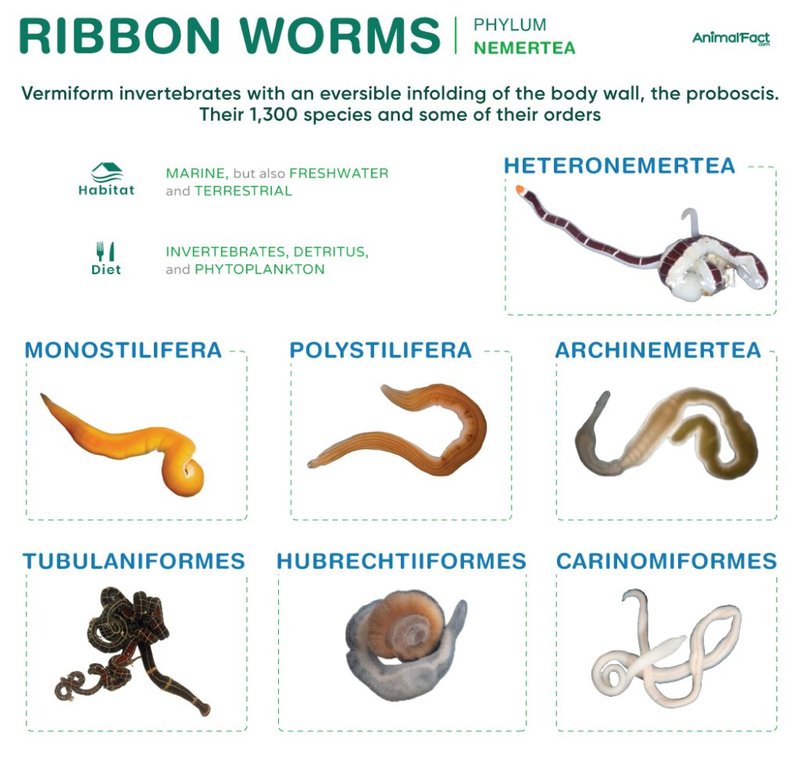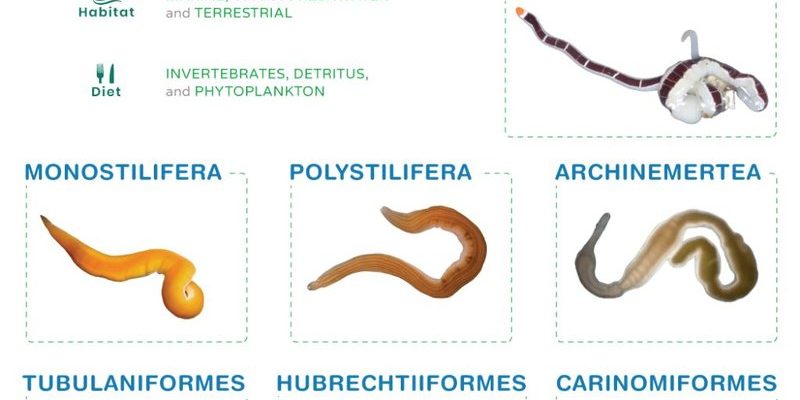
These worms aren’t just fascinating due to their movements; they play an essential role in their ecosystems, often going unnoticed by those who don’t dive deep into marine biology. Let’s take a closer look at how ribbon worms manipulate their bodies and why this ability is crucial for their survival.
Understanding Ribbon Worm Anatomy
To appreciate how ribbon worms expand and contract, it’s essential to know a bit about their anatomy. Ribbon worms have a long, slender body that can reach impressive lengths, in some cases, over 30 meters! Their bodies are made up of a soft outer layer called the epidermis, supported by a network of muscles and a fluid-filled cavity known as the coelom.
Here’s the thing: the body of a ribbon worm is a bit like a water balloon. When you squeeze a water balloon, it changes shape as the water moves within. Similarly, when ribbon worms want to expand, they fill their body cavity with fluid, which stretches their body. When they contract, they expel some of that fluid, allowing their body to pull back into a compact form.
The Role of Muscles
Muscles play a critical role in this process. Ribbon worms have both circular and longitudinal muscles that work together to create movement. The circular muscles wrap around their body, while the longitudinal muscles run along the length. When the circular muscles contract, the worm elongates; when the longitudinal muscles squeeze, it shrinks back down. Essentially, it’s a coordinated dance of muscle contractions that allows them to manipulate their size.
These muscle movements aren’t just for show. They’re vital for:
- Locomotion: Moving through sand or water with ease.
- Hunting: Extending their bodies to capture prey.
- Defense: Shrinking to hide from potential threats.
How Ribbon Worms Use Expansion and Contraction in Their Habitats
Ribbon worms inhabit various environments, from marine to brackish waters, and their ability to expand and contract is crucial for thriving in these ecosystems. When they feel threatened, they can quickly retract into safe spaces like crevices or the ocean floor. This ability can mean the difference between life and death.
Honestly, it’s quite similar to how a turtle pulls into its shell when it senses danger. The ribbon worm retreats to keep its delicate body protected. Plus, being able to stretch out allows them to reach out for food or escape predators more efficiently.
Feeding and Hunting
When it comes to feeding, ribbon worms have quite the strategy. Many species use a specialized structure called a proboscis that can be rapidly extended or retracted. This proboscis shoots out to capture prey, often unsuspecting small fish or invertebrates, then reels them in. It’s like a fishing rod that can disappear and reappear in a flash!
This hunting technique is fascinating because it showcases how their ability to expand and contract isn’t just for mobility; it’s a key survival tactic. Imagine trying to catch dinner with just your arms—but you can stretch them out to reach further away. That’s essentially what ribbon worms do!
The Science Behind Their Movements
Now you might be curious about how exactly these movements work on a scientific level. The expansion and contraction are regulated by a combination of muscular control and hydraulic pressure. When a ribbon worm fills its coelom with fluid, it increases internal pressure, effectively elongating its body.
This hydraulic mechanism is how many soft-bodied creatures operate. The fluid acts like a filling in a balloon, allowing the worm to change its form without rigid bones. It’s a clever adaptation that allows for flexibility and mobility in sometimes challenging aquatic environments.
Fluid Dynamics At Play
The ability to manipulate internal pressure also helps ribbon worms navigate their surroundings. They can move through narrow spaces by altering their shape and size, squeezing through tight areas where other predators might not fit. Think of it like a magician in a box—vanishing and reappearing as needed!
This fluid dynamics principle isn’t just a neat trick; it allows ribbon worms to exploit various habitats and search for food in places that might be difficult for other creatures to access. They are true masters of their environment.
Behavior and Adaptation
Behaviorally, ribbon worms are quite fascinating. Their ability to expand and contract serves multiple purposes that portray their adaptability and resourcefulness. Besides feeding and avoiding predators, they also use these movements to communicate and interact with other ribbon worms.
Their body movements can indicate readiness to mate or ward off rivals. When you observe them in their natural habitat, you might notice that their responsiveness to the surroundings often determines their shape and size at any given moment.
Seasonal Changes and Body Manipulation
Interestingly, ribbon worms can also adjust their behaviors based on seasonal changes in their environment. For instance, during colder months, they might become less active, spending more time coiled up. In warmer months, they’ll stretch out and become more mobile, looking for food and mates. It’s like a perpetual cycle of adaptation to thrive in their ecosystem.
This adaptability can teach us a lot about resilience. Just as ribbon worms adjust to their surroundings, we can learn to be flexible in our own lives and adapt to changing situations.
Wrap Up: The Marvel of Ribbon Worms
In conclusion, the way ribbon worms expand and contract their bodies is an incredible example of nature’s ingenuity. From their unique anatomy to their fascinating behaviors, these creatures showcase a remarkable ability to thrive in diverse environments. Understanding their movements not only sheds light on their biology but also emphasizes their importance in marine ecosystems.
So, the next time you think about these seemingly simple creatures, consider the complex processes that choreograph their movements. Whether they’re darting out to catch prey or pulling back to hide, ribbon worms are truly nature’s acrobats—reminding us that even the smallest beings hold incredible stories.
This glimpse into the life of ribbon worms highlights just how much we still have to learn about the wonders of marine life. Isn’t it delightful to think about how much is happening beneath the surface? Keep exploring the world around you—it’s filled with incredible surprises!

